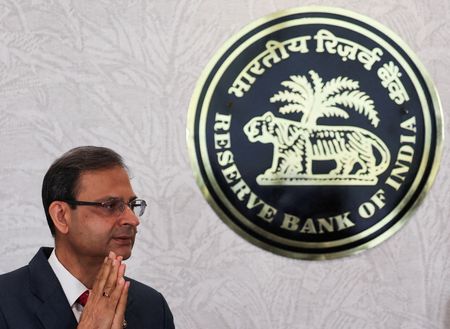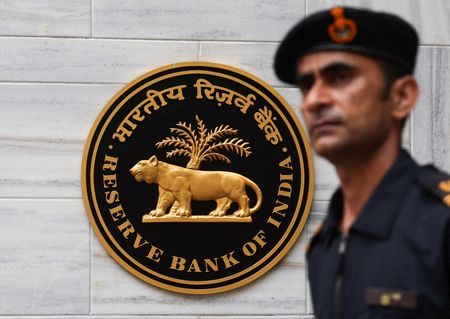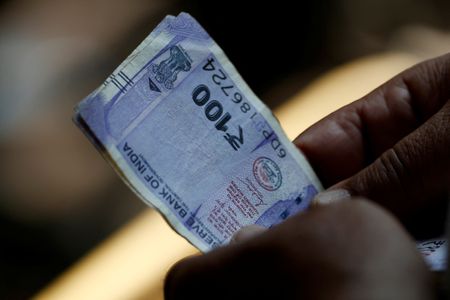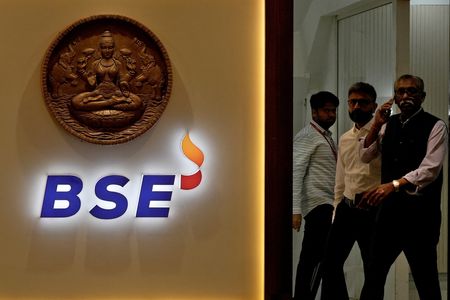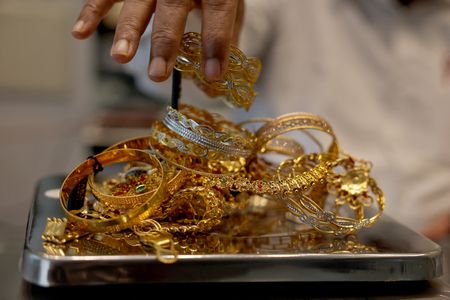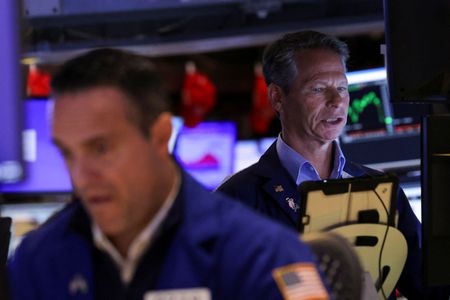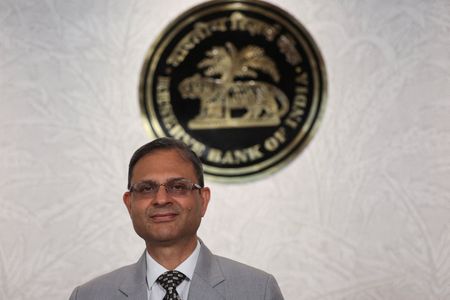By Swati Bhat and Abinaya V
MUMBAI (Reuters) -The Reserve Bank of India (RBI) kept its policy rate unchanged on Wednesday, signalling room to lower rates in December as it assesses the impact of domestic tax cuts and punitive U.S. tariffs on the South Asian economy.
The central bank said low inflation had “opened up policy space for further supporting growth,” after its six-member Monetary Policy Committee (MPC) voted unanimously to hold the repo rate at 5.50% and retained a “neutral” policy stance.
India has faced U.S. tariffs of up to 50% on key exports, ranging from textiles to chemicals, but consumer tax cuts announced by Prime Minister Narendra Modi’s government are expected to bolster growth and suppress inflation.
“The current macroeconomic conditions and the outlook have opened up policy space for further supporting growth,” RBI Governor Sanjay Malhotra said in a video address.
“However, the MPC noted that the impact of the front-loaded monetary policy actions and the recent fiscal measures are still playing out,” he said.
The central bank had cut the repo rate by a total of 100 basis points in the first half of 2025, but paused at its previous meeting in August.
Two members of the MPC were in favour of changing the stance to accommodative, the committee’s written statement showed.
A Reuters poll had predicted rates would remain on hold, although some economists highlighted subdued inflation and risks to growth as reasons for a potential cut.
India’s benchmark 10-year bond yield was 1 basis point higher at 6.5901%, while the rupee was marginally firmer at 88.71 per dollar and equity indexes were slightly stronger.
“Despite status quo, the commentary is dovish,” said Teresa John, lead economist at Mumbai-based brokerage Nirmal Bang.
“CPI inflation has been revised down to 2.5% while growth is expected to moderate in the second half of FY26, both of which open up policy space for rate cuts largely on external headwinds,” said John, who expects a 25-bp rate cut in December.
HIGHER GROWTH, LOWER INFLATION
The central bank raised its GDP forecast for the current year to 6.8% compared with its previous estimate of 6.5%.
The Indian economy grew at a stronger-than-expected 7.8% in the April-June quarter from a year earlier.
Economic activity has remained resilient, Malhotra said. “However, ongoing tariff and trade policy uncertainties will impact external demand,” he said, adding that several “growth-inducing structural reforms”, including consumer tax cuts could counter the impact of global risks.
The RBI expects inflation in the current financial year to come in at 2.6%, lower than its previous estimate of 3.1%.
The MPC said the outlook on inflation has turned more benign due to lower food prices and tax rate cuts, Malhotra said in his statement.
India’s annual inflation accelerated to 2.07% in August as food prices inched higher, but remained close to the lower end of the central bank’s 2%-6% tolerance band, giving the RBI room to cut rates.
Sakshi Gupta, principal economist at HDFC Bank, cautioned that a December rate cut is not guaranteed and dependent on how growth momentum evolves in the coming months.
BOOSTING LENDING, RUPEE USE
The central bank also announced a raft of measures to enhance international acceptance of the rupee and ease lending rules for banks.
Banks will gain greater flexibility to lend to large corporates, reversing restrictions introduced in 2016. They will also be permitted to lend for acquisitions and increase lending against listed securities.
To promote rupee use in overseas transactions, the central bank will allow rupee balances held in domestic accounts to be invested in corporate bonds and enable banks to lend in rupees to neighboring nations including Nepal, Bhutan and Sri Lanka.
Rules for Indian firms borrowing in foreign currencies will also be eased, Malhotra said, without providing details.
(Reporting by Swati Bhat and Abinaya V.; Additional reporting by Dharamraj Dhutia and Nimesh Vora; Writing by Ira Dugal; Editing by Mrigank Dhaniwala and Jacqueline Wong)

